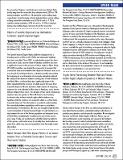Por favor, use este identificador para citar o enlazar a este item:
http://hdl.handle.net/10261/270161COMPARTIR / EXPORTAR:
 SHARE
BASE SHARE
BASE
|
|
| Visualizar otros formatos: MARC | Dublin Core | RDF | ORE | MODS | METS | DIDL | DATACITE | |

| Título: | Pattern of Juvenile Dispersal in an Uninhabited Continent: Spanish Imperial Eagles |
Autor: | González-Bernardo, Enrique CSIC ORCID; Morandini, Virginia CSIC ORCID CVN; Ferrer, Miguel CSIC | Fecha de publicación: | nov-2017 | Citación: | Annual Meeting of the Raptor Research Foundation (2017) | Resumen: | The Spanish Imperial Eagle (Aquila adalberti) disappeared as a breeding species in Africa in the 1960s and subsequent sightings have been anecdotal. Since 2002, a reintroduction project has been carried out in Cadiz, near the Strait of Gibraltar, and there has been a significant increase in the presence of these eagles in Africa. Using GPS-GSM transmitters, we studied the movements of juveniles that crossed this strait to test whether their dispersive behavior varies in an area devoid of breeding territories; a situation possibly representing the beginning of a recolonization of previously extirpated continent. We compared the distances between roosting sites in both Andalusia and North Africa, and found they were significantly longer in the latter, indicating that the presence of adults may be the main driver in juvenile dispersal. We also detected a lower number of temporary stopovers for each individual in Africa than in Andalusia, and a shorter distance between these areas. The duration of time spent at temporary stopovers was also greater in Africa. We found a clear tendency to return to sites in these tracked eagles, which reinforces our hypothesis that the existence of conspecific adults is a critical factor to juvenile dispersal. This information is essential to understanding the connectivity between populations and becomes crucial when planning future reintroductions. We have also brought to light that the recent colonization of Spanish Imperial Eagles in Cadiz functions as a step between the rest of the Iberian population and extirpated areas of North Africa, facilitating the resettlement in part of this species’ prior range. Finally, our monitoring has identified dispersal patterns of this species, and located areas of mortality from electrocution on power lines, which may represent population sinks that might require intervention. | Descripción: | Annual Meeting of the Raptor Research Foundation 2017 (8-12 nov, Utah, USA). | URI: | http://hdl.handle.net/10261/270161 |
| Aparece en las colecciones: | (EBD) Comunicaciones congresos |
Ficheros en este ítem:
| Fichero | Descripción | Tamaño | Formato | |
|---|---|---|---|---|
| Spanish_Imperial_Eagles.pdf | 56,81 kB | Adobe PDF |  Visualizar/Abrir |
CORE Recommender
NOTA: Los ítems de Digital.CSIC están protegidos por copyright, con todos los derechos reservados, a menos que se indique lo contrario.
